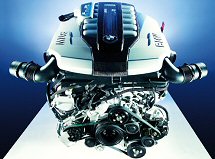When we talk about automobiles to aficionados they talk about 8-cylinder, 400 horsepower, twin exhausts, overhead cams and lots of other jargon associated with the internal combustion engine. In this blog we look at engine technology and speculate on the fate of the internal combustion engine (ICE) in the 21st century. ICE today is seeing competition from electric hybrid technology, electric cars and hydrogen fuel cells, but in the past there were other competing technologies.
Picture this. The year is 1900. Automobile manufacturers in the United States produce 4,192 vehicles of which 1,681 run on steam, 1,575 run on electricity and 936 use gasoline-powered ICEs. When consumers are asked at a National Automobile Show in New York City their preference, their responses favour an electric automobile first followed by steam. ICE automobiles trail the pack.
So Why Didn’t the Steam Engine Take Off?
The beginning of the automobile age provided buyers with many engine choices. One of those was steam. Considering steam had a legacy of a century behind it one would have thought it would be the engine of choice for the new automobile industry. After all trains used steam. All the automobile makers needed to do was take the train steam engine and scale it down to fit something smaller than a locomotive. Soon steam-engined automobiles appeared on North American and European roads.
Steam had some advantages over ICE. Steam was quiet when compared to ICE engines with their noisy pistons and valves. Steam ran on water and a little bit of fuel to heat the boiler. The fuel could be almost anything – wood, charcoal, coal, kerosene. ICE required gasoline, a distillate from oil refining, used more as a solvent than a fuel. Although early steam-powered automobiles needed frequent stops to take on water, once water-condensing and recycling systems were added these vehicles could cover very long distances. One even was able to travel over 2,400 kilometers (1,500 miles) before making a pit stop.
But steam also had disadvantages. The engines needed to be warmed up for a long time before the boiler could build up a proverbial “head of steam.” This meant delay before the steam-engine automobile could drive, and early steam cars literally ran out of steam requiring frequent water stops.
Steam eventually lost out to ICE technology and by 1920 steam-powered automobiles had disappeared. We will deal with the why a little later in this blog. But it should be pointed out that a few clever inventors continued to tinker with steam and today steam may be making a comeback because of its low-carbon footprint.
Electric Cars – Been There, Done That!
Like steam the electric automobile has a long history dating back to the 19th century. Electric vied with steam and ICE technology at the outset of the automobile age.
Electric automobiles suffered from the same problem that all-electric vehicles have today. Storing the power was the key and battery technology in the early 20th century made these vehicles prohibitively expensive when compared to the Model-T produced by Ford.
Travel distance between recharges represented a further obstacle to commercial success. A popular electric car in the early 20th century, the Detroit Electric achieved a record of 340 kilometers (211 miles) on a single charge. The Detroit Electric, however, was an exception to the rule.
Finally the electric cars of the early 20th century were not considered to be manly, largely driven by women and doctors. Why? Because the cranks that ICE automobiles used required considerable strength (the word “cranky” comes from the mood it put drivers in when trying to start the car). Women weren’t expected to crank an ICE engine so electric cars were sold to them. And the reason doctors were considered a market for the electric car was similar. A doctor simply couldn’t afford to get injured when cranking the starter to get an automobile going to do emergency visits and house calls.
The Triumph of ICE Technology
By the end of World War 1, ICE technology had proven itself on the battlefields of Europe and the Middle East. ICE predominated because:
- ICE-powered vehicles could be driven immediately upon start up unlike steam although steam-powered vehicles could match and exceed ICE range and distance
- ICE technology was capable of higher speeds than electric-powered vehicles (the Detroit Electric achieved 35 kilometers or 20 miles per hour as a top speed)
- Advances in ICE technology by 1912 eliminated the crank making it possible to use an electric, key-driven starter, hence no more cranky drivers
- Henry Ford introduced mass production making ICE-technology much cheaper than any of its competitors
- World War 1 encouraged the development of a gasoline infrastructure to support ICE technology for military and domestic use
Of all of the reasons mentioned above it was the electric starter that drove steam-engine and electric cars from the market with 1913 being the year of dramatic change. In that year while sales of electric automobiles declined to 6,000 units Ford sold 182,809 Model Ts.
In 1890 where would you buy gasoline? Not in gas stations but in your local hardware story, sold by the can. What did you use it for? As a solvent and occasionally as a heating fuel. The predominant “vehicle” of the time was the horse and horse-drawn carriage or wagon. The cost of feeding and caring for a horse was high compared to the cost of operating a motor vehicle. By 1905 motor vehicles were consuming 600,000 barrels of gasoline a year in North America, representing approximately 9% of total annual gasoline production. By 1916 the livery and bicycle repair shops evolved into 18,500 automobile repair garages dispensing gasoline from cans and barrels.General and hardware stores, and independently operated tank wagons were other ways to get gasoline. For the well-to-do, companies like Bowser started outfitting homes with their own indoor tanks and pumps. Soon this technology found a new home, gas stations.

The service station as we know it began to appear by the mid-1920s. These stations offered amenities like clean washrooms, free maps, air and water, and accessory products such as tires, and batteries.

Today, the ICE infrastructure represents the single most compelling reason for its continued global predominance.
What is Driving Us Away from ICE?
In the 21st century humanity confronts two challenges that make ICE less compelling as a technology option. These are climate change and fossil fuel supply.
- ICE technology has never been a clean technology. The hydrocarbon byproducts of ICE include many pollutants. Whether contributing to ground-level ozone, smog, or increasing the amount of CO2 in the atmosphere, ICE tailpipe emissions continue to be a problem. Catalytic converters have reduced pollutants but not eliminated them. We know that adding carbon to the atmosphere is a recipe for human-induced climate change. We also know that we can stop making this contribution by finding alternative power sources for the automobiles we love.
- Although we are not going to run out of fossil fuel for the forseeable future (well over another century based on current exploration discoveries, bitumen, oil shales, and oil recovery from depleted fields), the price of gasoline will continue to rise. At what price will it no longer be practical to use gasoline as the primary means of generating the energy needed for automobiles? Is it $5 per liter (close to $20 per gallon) or more?
What are the Alternatives Today and Tomorrow?
Better ICE, Diesel and Natural Gas
Although diesel engines have always been an alternative to ICE, diesel technology is just as reliant on fossil fuel production and will be subject to the same rising price curve. Improving the performance of ICE technology so that it uses less gasoline per kilometer represents a stopgap measure as well. Natural gas-driven automobiles represent another technology but once again we are talking about a fossil-fuel energy source. If we are to eliminate fossil fuels as the energy source to power automobiles then we need to look at other technologies.
Biofuelled Automobiles
Many automobiles today operate using blended gasoline or diesel that combines fossil and bio-derived fuel. Producing biofuels to-date requires significant energy input for the energy output. Biofuels from fallow fields, such as switch grass or fuels produced from algae would be much preferred to those derived from corn and sugar cane. Biofuel ICE technology is already on the market and could very well be its saviour. For additional information see my earlier blog discussion on biomass and biofuels.
Hybrids a Stop-Gap
Hybrids represent a stop-gap technology. They use a propulsion system that marries ICE to electric motors and batteries, and captures energy from braking to recharge batteries to create very low gasoline consumption. Hybrids are not a new idea. Ferdinand Porsche in 1898 built his first hybrid automobile using a combination of ICE and electric motors located in the wheel hubs. The automobile could travel over 60 kilometers (approximately 40 miles) on electricity alone. Throughout the 20th century manufacturers tinkered with engines that combined ICE technology and electrical motors but it wasn’t until the oil embargo of the 1970s that hybrids were given serious consideration as an alternative power source for automobiles. Even then no commercial vehicles appeared in the market despite gasoline shortages.
In 1976 Toyota built its first hybrid but the vehicle never became a commercially produced car. But the company never gave up on its early foray into this technology, By 1997 it launched the Prius, the first mass-produced hybrid vehicle. By 2010 Prius sales had reached over 2,000,000 vehicles worldwide and an average of 400,000 new orders each year. The hybrid had come of age and today represent a better solution than diesel, natural gas or improvements to ICE technology alone.
The Rebirth of the Electric Car
We have talked about the electric car in a previous blog. The rebirth of the electric motor in automobiles represents a move away from fossil-fuels and a serious reduction in carbon emissions. These vehicles combine electric-motor drive systems with batteries and sustain a charge for 100 or more kilometers (about 60 miles). These are urban commute vehicles at best, limited by current battery technology. The electricity sustaining this technology comes from plugging-in to a power source which may be a coal, natural gas or other fossil-fuel power plant, and therefore not exactly a zero-carbon solution. But it represents a significant initiative with engineers and scientists devoting considerable effort to finding greater efficiency and capacity in storage technology while reducing it scale (see my blog on energy and storage).
Fuel Cells – Not Just for Spacecraft
Fuel cell technology has been with us for more than a century but it was only in the last 35 years of the 20th century that space scientists and engineers at NASA popularized this technology for use in the Apollo Program and subsequently in the space shuttle. Fuel cells are powered by hydrogen to generate electricity. Water is the byproduct, a highly valued need in space.
Fuel cells that work in automobiles do not have to carry on board oxygen. They get oxygen from the air. But they do require stored hydrogen. A Polymer Electrolyte also known as a Proton Exchange Membrane or PEM acts as a filter only allowing positively charged ions to pass through it while forcing the electrons to travel around it creating a current. On its own a single fuel cell produces on 1.16 volts of electricity. As a result, just like the lithium battery stacks in electric cars, fuel cells are stacked together to generate enough energy to run an automobile.
The major challenge with fuel cells is hydrogen itself: how to produce it and store it. Hydrogen packs a lot of punch when burned producing 3 times the energy of gasoline when compared by weight. But by volume hydrogen produces only 1/3 of the energy of gasoline. So the trick is to compress the hydrogen using a number of options that include:
- storing hydrogen as a gas at 3,450 KPA (5,000 PSI) to 6,900 KPA (10,000 PSI) in high pressure tanks
- storing hydrogen as a liquid at -250 C (-423F) in onboard tanks
- storing hydrogen compounded into other materials and extracting it through chemical reaction
Currently the first two methods are used in a limited number of test automobiles, bus and trucks. The liquefaction method is one more familiar to us from watching hydrogen and oxygen being vented from liquid rocket boosters sitting on launch pads. Placing a liquid hydrogen tank system with on-board refrigeration represents a real challenge in scaling down the technology.
Storing hydrogen in materials requires no heavy or high pressure storage equipment on board a vehicle. Instead the hydrogen gets extracted from a chemical hydride such as ammonia-borane which contains by weight 19.6% hydrogen. Extracting hydrogen from such complex chemistry can re;ease toxic chemicals such as ammonia and borazine in ammonia-borane. A company, Cella Energy, has developed a method it calls coaxial electrospinning or electrospraying to extract hydrogen and trap unwanted chemicals in a nano-porous polymer made from polystyrene. The process is designed to protect the hydrides from oxygen and water, making it possible to be handled in normal air. The technology is as of yet not commercially available but represents a workable solution to deliver hydrogen as a fuel for automobiles. Expect to see vehicles using hydrogen compounds as fuel in the not too distant future.
ICE Will Remain With Us for Awhile
Don’t expect to see ICE technology disappear in the near future. Our automobiles and trucks will continue to run on ICE technology well into the mid 21st century with hybrid systems increasingly replacing ICE-only vehicles. It is amazing that a technology which demonstrated so many disadvantages at its inception has retained such a hold on human society. And it is all tied to our love affair with the automobile.








